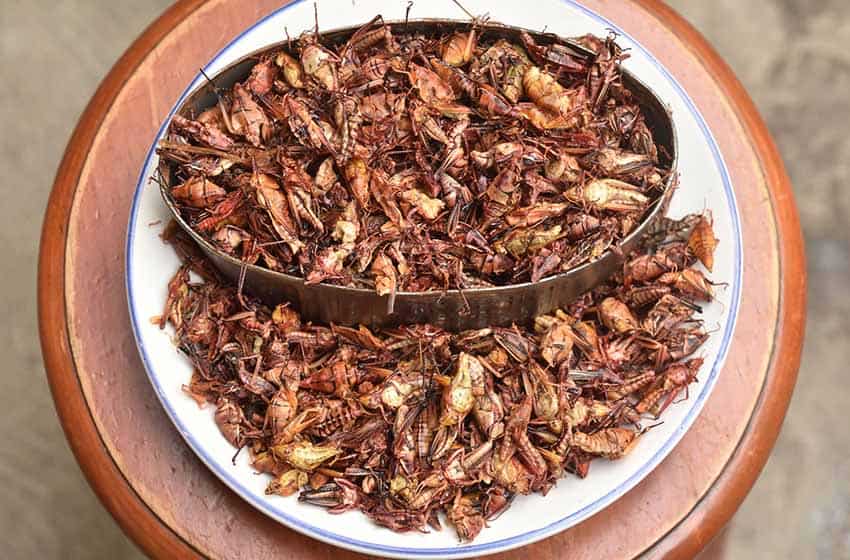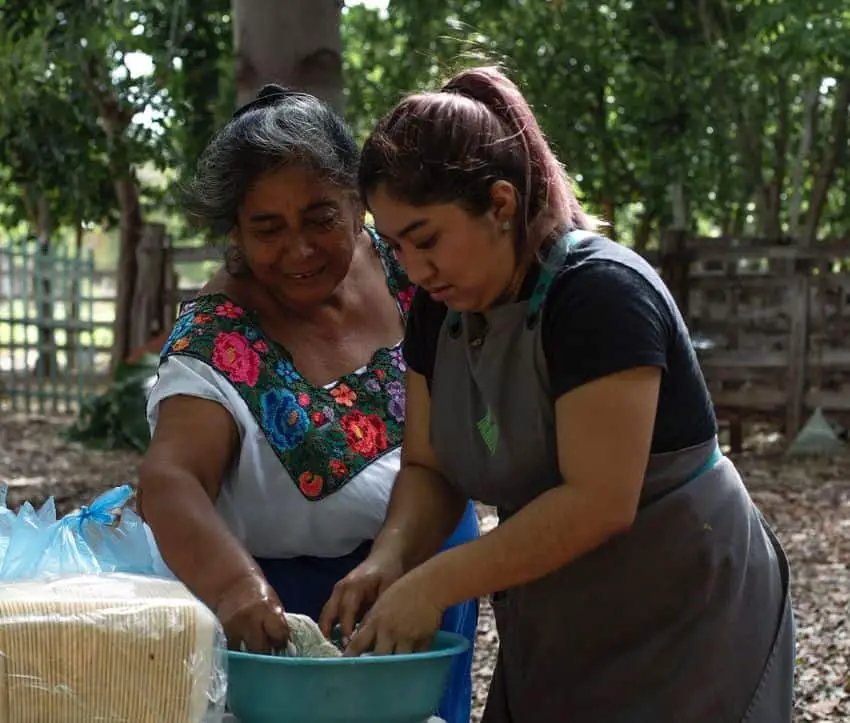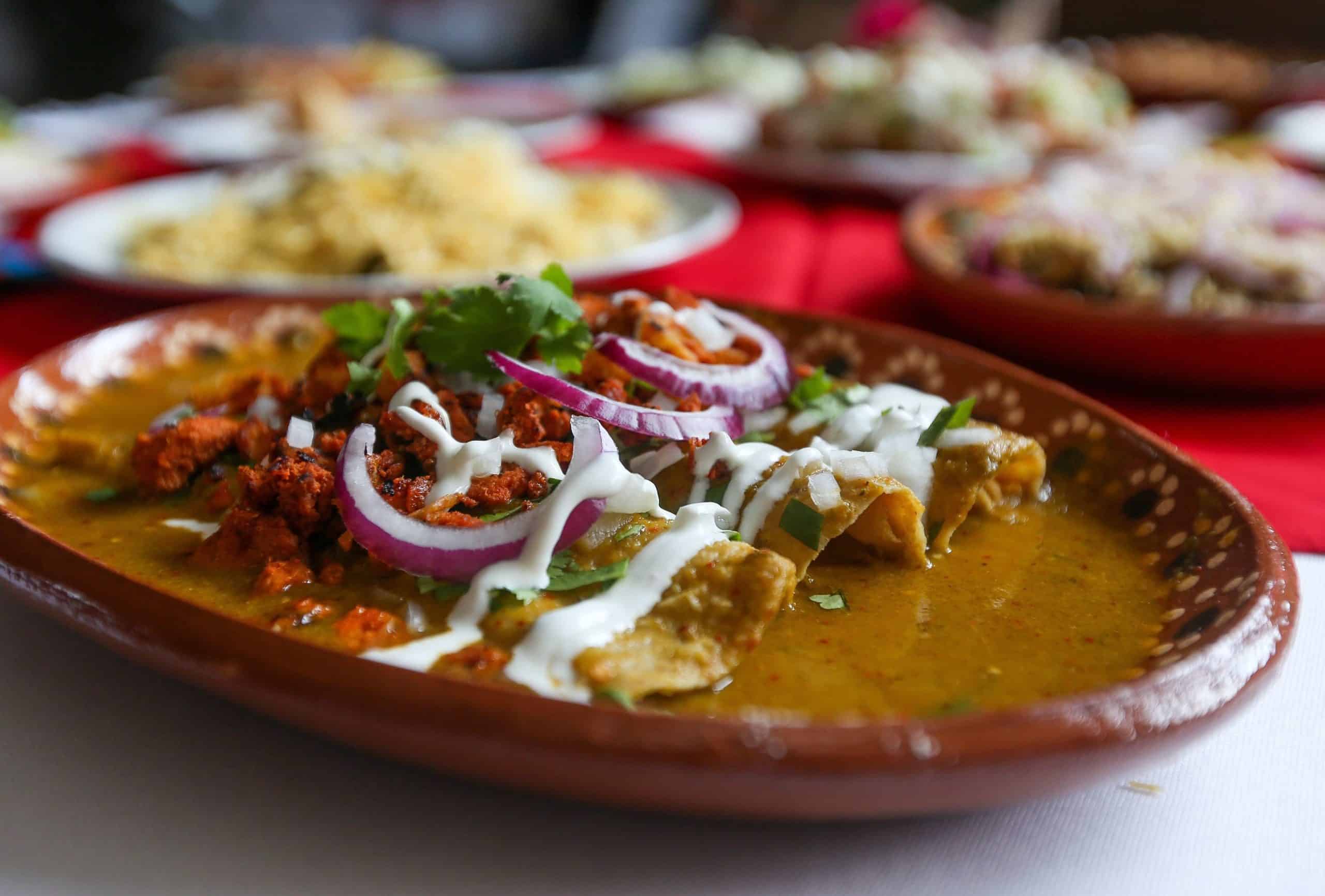Preserving Mexican food traditions in a changing world
Mexico works hard to preserve its traditions. Charreadas have survived with gusto since the 16th century. Mariachi and banda musicians began belting out romantic ballads in the 19th century and have not stopped since. Yet Mexico’s devotion to its customs is nowhere more evident than in its cuisine. Mexican food traditions are therefore among the oldest and most unique in the world.
Society’s newfound need to keep things moving and satisfy every urge instantly has challenged traditions and customs. With the help of four top chefs, we’ve discovered the trick to saving Mexico’s classic dishes in a world of McDonald’s and ready-made salads at Oxxo.


Challenges for traditional Mexican cuisine
The fast-paced lifestyle of today’s young generations has unfortunately also led to an equally fast-paced diet. “In the past, people used a metate to grind chilies, pepper, garlic and cinnamon,” says Zaylam Colli of Kexti’i in Mérida. Nowadays, families have neither the time nor the money to maintain such traditions. Instead of cooking, they resort to ready-made sandwiches or packages of highly processed snacks to satisfy hunger and save a few pesos.
Much of this easy availability is due to the global supply chains that Mexico is part of. While globalization has its advantages, not everything is rosy. With access to exotic dishes from Japan to Peru, traditional products and foods are being neglected in favor of trendier bites. Juan Antonio Rodríguez and Cinthia Salvador of Hñähñú restaurant in Mixquiahuala, Hidalgo, whose menu is dedicated to the state’s Otomi roots, says the trend is to “displace products, techniques, knowledge and flavors in the name of culinary fashion.”
Climate change is an ongoing issue and poses a clear threat to traditional cuisine all over the world. In Mexico, this threat manifests itself in the form of shortages. Less rain and rising temperatures are having a devastating impact on ingredients that were once harvested in abundance, such as chilies.
In recent years, the consumption of insects, a delicacy in traditional Mexican cuisine, has declined. According to Rodríguez and Salvador Escamole nests were empty and “the cocopaches (mezquite bugs) did not even show up on the mezquite trees this year.”


“Climate change is endangering our own ancestors,” they add, a view shared by all the chefs interviewed for this article.
Ingredients and dishes at risk
Taken together, these factors threaten regional dishes and local ingredients. While total extinction will not occur, the loss of just one ingredient would have a domino effect on traditional cuisine; the extinction of a small chili variety, for example, could destroy an entire cuisine.
Lesterloon Sanchez is head chef of the Hotel Múcara in Veracruz and author of the Cookbook 2017 “Las flores en la cocina veracruzana.” He describes this phenomenon in detail.


“The ingredient is just as important as the way it is consumed,” says the chef. “One cannot survive without the other. Let’s think of a native chili that grows in a certain community. Something interesting happens. In that community, that chili is used in certain dishes such as tamal, mole or salsa. If that food was no longer prepared in the community, the farmers would stop growing the chili.”
“But in the same way,” Sánchez told me, “if farmers stop growing chilies and they disappear from the fields, all the dishes made with this native variety of chili would lose their meaning, their flavor and their context. Over time, they (the dishes) would no longer be prepared and would disappear along with the cuisine of this community.”
Colli, Rodríguez and Salvador have specifically pointed out that the following dishes are disappearing from menus around the world:
- Joroches: A Yucatecan dish made from xcaita pumpkin cooked with corn broth and zucchini flowers.
- Morcilla-Kol: A Yucatecan stew made from blood sausage and corn porridge.
- Ek: Wasp eggs, a delicacy eaten in Yucatán as a taco with habanero chili salsa.
- Githe: A Hidalgo stew made from hearty goat meat and chili, thickened with corn mash.
Preservation of local traditions


Colli and her family are working to preserve Nunkiní cuisine in Campeche by organizing traditional cooking workshops and teaching local people preservation methods. Rodríguez and Salvador in Hidalgo say that while this is just the tip of the iceberg, simply cooking traditional recipes is a good start.
For their part, Lesterloon Sánchez and his team work with small producers who grow their ingredients using agroecological methods. By purchasing local ingredients, they can ensure the continued production of unique native ingredients such as Compeño chili peppers and pink salt from Soconusco, Veracruz.
The beauty of Mexican cuisine
If you read them right, a country’s most treasured dishes tell you a story. The colors, textures, spices and grains work together to reflect a country’s history, geography and personality.


Mexican food is praised for its aromas, flavors and bright colors. But what diners often overlook when eating it is the antiquity of the cuisine and its connection to the land. “Its origins lie in one of the oldest cuisines known to humanity, found in one of the most biodiverse regions in the world and following a historical path that connected entire civilizations,” says Lesterloon Sánchez. “I learned from a young age that there is not one Mexico, but many Mexicos that coexist in the same territory and even outside that territory. Therefore, we cannot speak of Mexican cuisine, but of Mexican kitchens.”
So when your stomach starts to growl, maybe you can forgo the comfort of the corner Greengrass or the bag of Doritos? Can you eat a handmade tamal instead, or, better yet, Learn how to use a Molcajete and bring the flavors of Mexico to life in your own kitchen? Mexico, its land and its people will benefit.
Check out the upcoming work by Mexico City-based ArcaTierra Festival of the Taste of the Earth Event on September 29. In collaboration with the above-mentioned chefs, participants will enjoy six hours of expert talks, live music and a varied buffet of traditional foods in the former San Hipólito Convent in the historic center of Mexico City.
Bethany Platanella is a travel planner and lifestyle writer based in Mexico City. She lives for the dopamine rush she gets right after booking a plane ticket, exploring local markets, doing yoga, and eating fresh tortillas. Sign up to see her Sunday love letters in your inbox, read their Blogor follow her on Instagram.
